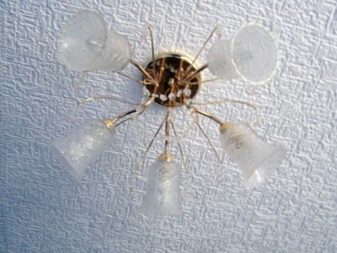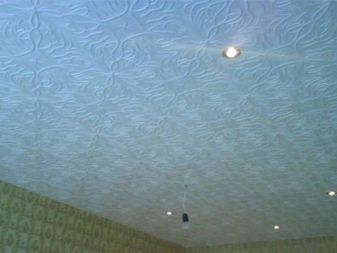Seamless ceiling tile

Today's variety of finishing materials for the design of the ceiling covering is capable of striking any imagination. Slabs and panels vary in the type of material used, formats and sizes, color, cost, durability and strength, price and many other characteristics.
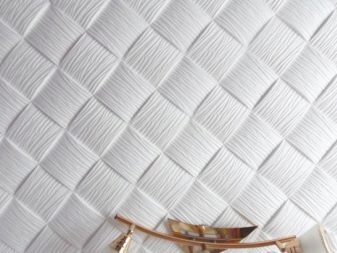
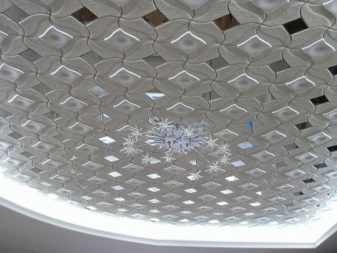
Among the variety of modern coatings, seamless tiles are particularly popular. It is very light, strong and durable, it is not afraid of high humidity and is available in a huge range. In addition, it is one of the most affordable ways to design the ceiling covering.
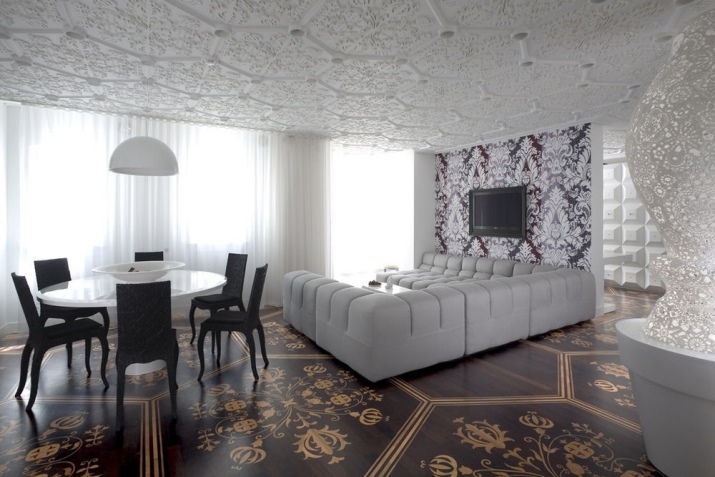
Features
Most often, seamless board is made of polystyrene foam and has slightly bent edges. Due to this nuance, the finished canvas looks complete, and the seams in the joints of the tiles are almost invisible.
In order to obtain this finishing material foam polystyrene undergoes a special processing, resulting in snow-white thin tiles. One surface of the panels is flat and smooth, while the other is stamped with a relief pattern, reminiscent of stucco.
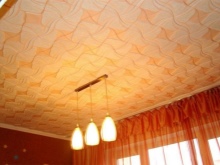
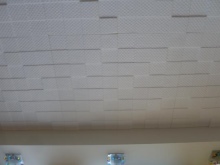
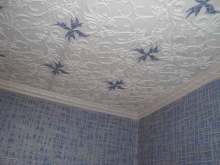
The tile is very soft, thin (thickness of about 5 mm), easy and quick to glue and does not reduce the height of the room, which cannot be said about other finishing materials, such as suspended or stretch ceilings.
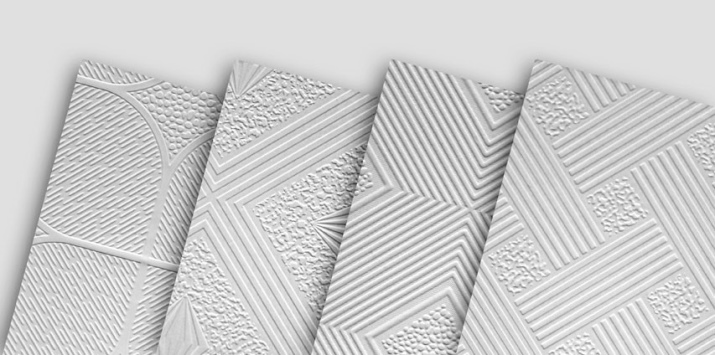
Compact size (50x50 cm) allows you to easily cope with gluing the board, even one person. It requires a minimum of tools and time.
The seamless tile can be smooth or textured. This gives a lot of opportunities for the original design of the ceiling covering in a room, hallway, bathroom, kitchen or other room.
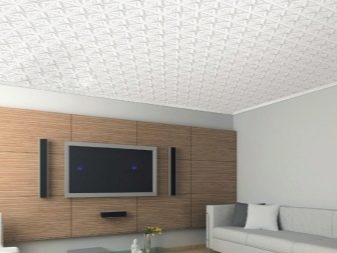
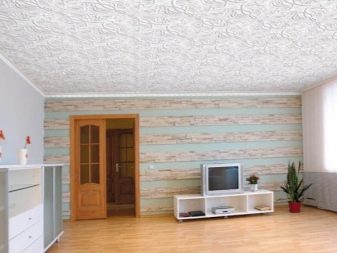
Types of seamless tiles
Styrofoam panels for seamless ceiling coverings can come in the following varieties:
- Panel with shaped edges. The end parts of each tile are made in the form of a zigzag or wave. These shaped notches allow the tiles to be more firmly connected to each other, and the seam will be almost invisible.
- A panel with a decorative filler. The tiles are decorated with a decorative pattern, ornamentation or abstraction. These tiles are easy to join together, and the seam, thanks to the eye-catching, embossed ornamentation, becomes invisible.
- A panel with calibrated edges. The perfect connection of the tiles is due to their geometric parameters and the same angles. The coincidence in all parameters goes practically without error.
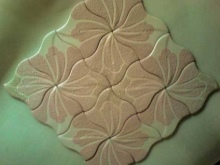
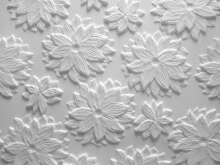
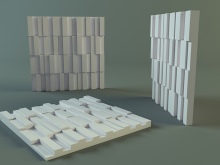
Pros and cons
To choose a suitable option for interior design, to begin with, it is necessary to compare the advantages and disadvantages of each material.

The advantages of seamless tiles include:
- Low cost in comparison with other cladding materials.
- Ease of installation and unpretentiousness in care. Tiles are easily cleaned from dirt and do not require the use of special means.
- High moisture resistance and fire safety.
- Wide assortment line.
- Rich range of colors (if necessary, the tiles can always be painted by hand in any color you choose).
- Good thermal and acoustic insulation ability.
- Tile perfectly hides cracks, chips, small irregularities of the ceiling covering (installation does not require perfect preparation of the ceiling, it allows you to reduce the cost of repairs).
- The panel is made of environmentally friendly material and is suitable for design of any interiors.
- Aesthetic appeal.
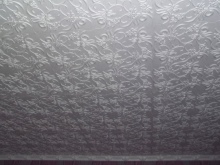
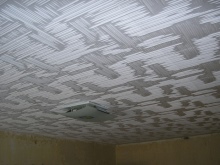
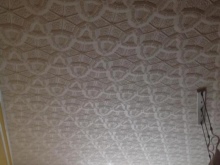
The disadvantages of such a board are very few:
- Low air permeability.
- Deformation at strong temperature fluctuations.
- Brittleness.
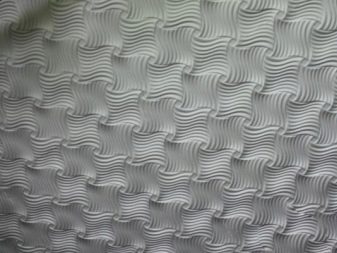
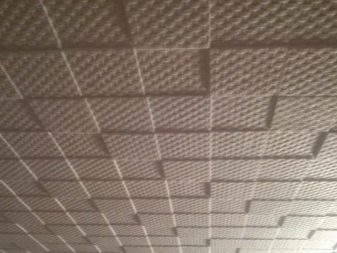
Methods of manufacture
Styrofoam tiles can be produced in different ways. It depends on its final cost, mechanical and operational characteristics, as well as aesthetic appeal.
- Pressing. The easiest and inexpensive way, which in another way is called more stamping. In this method, polystyrene foam is placed in a specific mold under pressure. The output is a tile 50x50 cm in size, 6-7 mm thick with small grain inclusions on the surface.
- Injection. With this method, you get a slab with a thickness of 9 to 14 mm with a perfectly smooth faced surface without any inclusions. It is distinguished by increased strength and higher cost.
- Extrusion. Extruded board is the thinnest (3 mm) and strongest. Characterized by a high coefficient of water resistance. Often available with a surface that imitates the marble coating or any other natural material.
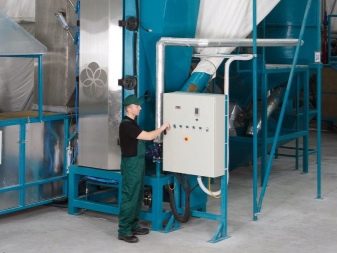

Color solutions
The classic version of the execution of seamless tiles is painted white. White tiles are very refreshing for any room, making it not only lighter and airier, but also more free and spacious. With these tiles you can visually expand the small area of space.
Gray or light beige tiles do not look as familiar as white. Such colors are close to universal and are perfect for interiors with a variety of styles and colors.
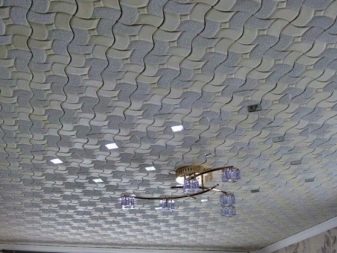
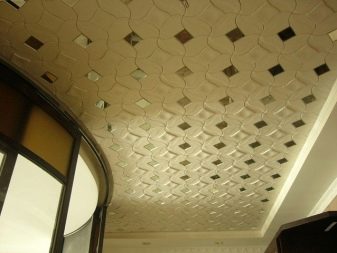
A combination of two colors, e.g. contrasting or similar in color, looks very original. The first option looks more effective and bright, the second - soft and gentle.
If you plan to decorate the room in a single color scheme, the variety of ceiling tiles will easily help to do this. Stores of construction and finishing materials today offer panels of green, red, pink, sand, turquoise and many other colors and shades.
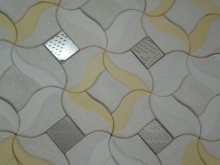
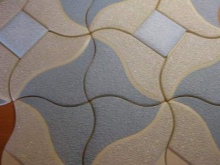
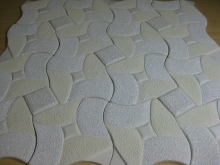
Design and texture
It is, of course, impossible to list the variety of patterns and textures offered today. Every year there are more and more of them, so there is less and less chance to meet a similar ceiling tile.
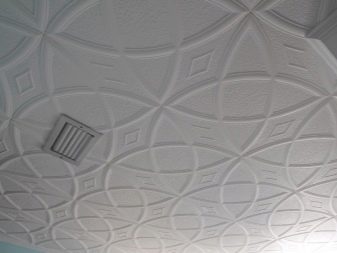
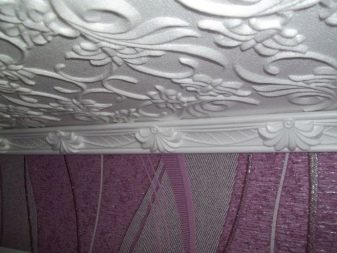
For fans of the classics, we can recommend smooth panels. They do not go out of fashion and always look relevant. The traditionally favorite ornaments include chessboard, waves, and geometry (cubes, rhombuses, triangles).
Floral ornaments are always popular. They can be small, discreet buds or large, lush flowers.
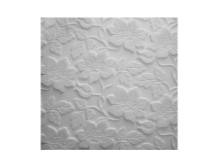

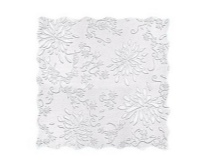
Tiles can imitate brickwork, zigzags, decorated with abstract ornaments and fantasy drawings. The pattern can be deep and surface. Sometimes to give a greater effect, white tiles are decorated with gold or silver glitter.
Natural materials are always in fashion. That's why collections of tiles imitating the texture of marble, wood, brick and other materials deserve a separate mention. For more similarity, the panels are painted in a natural color.

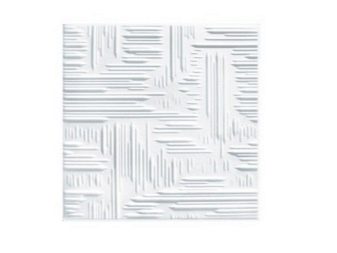
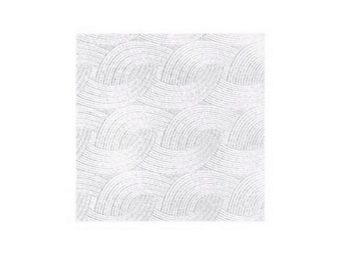

Selection tips
Acquire a truly high-quality material will help to comply with a few simple rules:
- The board should be flat, smooth. Drawing (if any) is clear, without deformations and chips.
- Checking the edges should be especially careful. After all, it is their ideal condition in a greater degree affects the integrity of the finished coating and the visual absence of seams.
- The reverse side of the board should not have dents or protrusions, polystyrene granules must be homogeneous and evenly crushed.
- You can check the strength of the board simply by taking it by the corner and holding it in the air for a few seconds. Poor-quality material can crack.

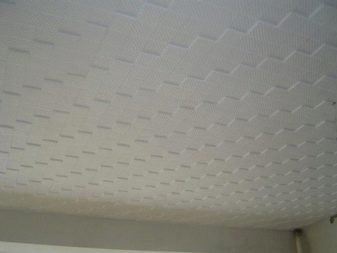
Features of laying
All types of work related to the laying of the slab can be divided into several main stages:
1. Calculation of the required amount of board. To know exactly how many boards you need to buy, you must first calculate its required quantity. To do this, the area of the ceiling covering should be divided by the area of one panel. A small percentage (usually up to 10) of the total amount is added for trimming the panels.
2. Purchase the necessary material. For work you will need tile, skirting (for the design of the junction between the wall and ceiling tiles), decorative elements such as rosettes, special adhesive for seamless tiles, primer. For the marking of the working surface will need a level, a tape measure, a simple pencil, a plumb line.
3. Preparation of the surface. The ceiling should be level, without obvious warps, large cracks, dents or protrusions. The surface should be cleaned, leveled with putty and primed. This will facilitate the process of gluing the board, and reduce glue consumption.
4. Marking the ceiling. To do this, first a central point is marked, through which two perpendicular lines are drawn.
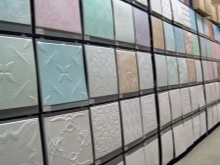
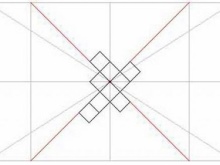

5. Laying. Tiles can be laid parallel to the walls or diagonally, starting from the center of the room. Glue should be applied around the perimeter of the tile and along its diagonal, then apply it to the ceiling and press firmly for a few seconds. Each subsequent panel is attached to the previous one as tightly as possible, without any gaps. Only if this condition is met will the finished flooring look seamless and unbroken. To prevent the tiles from separating while drying, you can additionally fasten them with masking tape. The remainder of the adhesive should be cleaned off the tiles immediately, without allowing it to dry out. After laying the tiles, you can start gluing the skirting board.
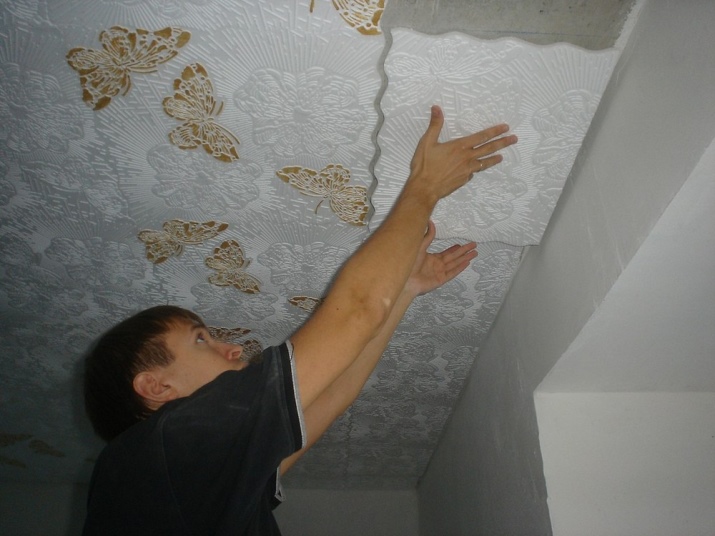
Reviews
Choose the right option for themselves ceiling coating help reviews of buyers who have already had the opportunity to appreciate this or that material.
Among the reviews left on the seamless tile, mostly positive responses are found. One of the main advantages of such tiles almost all buyers consider simplicity and ease of installation. It takes only a few hours to cover the ceiling in the room with tiles. It is not necessary to invite a team of specialists, buy and install the profile, remove or cover the furniture. The work is done quickly and very cleanly.
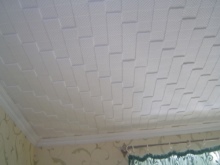
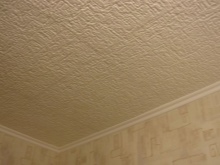
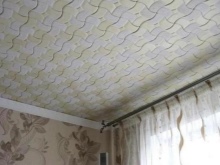
The next plus, not unimportant for the finishing material - a wide and varied range. The board can be smooth, ribbed, decorated with all sorts of ornaments, white or colored.
Practicality is another advantage of the board. It does not require special care, for a long time retains its original appearance, and if necessary, it can always be painted and renewed.
The low price is an important factor when choosing a finish. Any repair today is not cheap, so the cost of the finishing material plays a big role in its choice.
